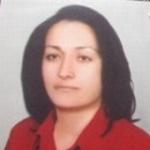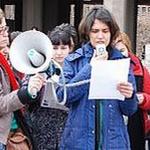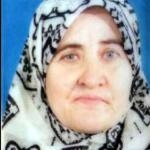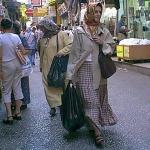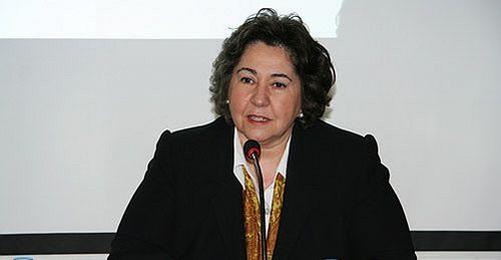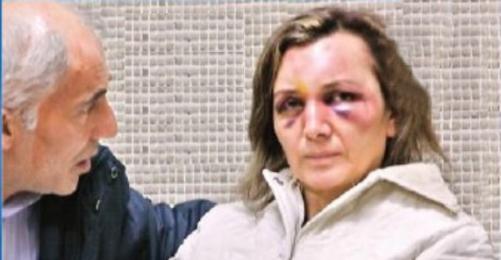In 2010, males of all age groups, professions and status from almost all over Turkey exposed women of all age groups, professions and status to physical, psychological, sexual, economic and emotional violence.
It seems that the reasons for violence vary - even though one basic reason solidified at a closer look: the demand of the men to dominate women. Men deemed women as their property and did not want to refrain from what they thought was the possession of their wives even after separation or divorce.
Our compilation can only reflect the incidents of violence against women that were considered "newsworthy" by journalists, editors and publication directors. However, it became clear that many eye witnesses, victims and perpetrators did not encounter violence for the first time. This was just the peak point of violence resulting in death or injuries and mostly having been continued for years.
At least 42 percent of violent incidents happened in an environment that was aware of the victim being threatened - the victims had previously applied to the police or prosecution because their lives were in danger, because they had been threatened or exposed to violence. According to the tally sorted out by bianet by reviewing newspapers, internet sites, and news agencies throughout the whole year of 2010, males killed at least 217 women and three children; 164 women and 4 children were injured.
At least 381 women and children were harassed, 207 women and children were raped. The majority of victims of harassment and rape were children. 23 women died of alleged suicide or under suspicious circumstances. At least 646 men and boys were taken into custody for alleged murder, injury, harassment and rape. They were either arrested or a search for them was initiated.
Harassment and rape by teachers or family members makes a significant ratio in our compilation which might stem from the fact that the "identity of the perpetrator" is always considered newsworthy. On the other hand, these numbers are important since they show how widespread harassment and rape were at school, at home and in public areas. It also revealed that women and children were harassed or raped by males they knew and trusted.
It was not always possible to monitor the legal procedures regarding murders, injuries, harassment and rape by skimming through the different kinds of media mentioned. However, the data compiled suggested that perpetrators of harassment and injury in particular were often released by the prosecution or the court.
If the courts decided for punishment on the grounds of "harassment", they generally postponed the pronouncement of the judgement since sentences remained below two years. The news also included items about demonstrations organized by women against the fact that perpetrators were acquitted because medical reports of the Forensic Medicine Institute were delayed.
Our compilation does not include data regarding psychological, economic and emotional violence against women since this was not reflected in the news. However, considering the correlation between all sorts of violence it is of course possible to say that all incidents reported in 2010 also involved psychological, verbal and economic violence. It should also be emphasized that women exposed to psychological, verbal and economic violence are left in a week position in terms of establishing a new life far away from the violent environment.
Dispersion of violence according to cities and regions
Read the proportional data related to violence against women and children and incidents of injuries, harassment and rape in cities and regions considering the age of the victims, the perpetrators' professions, their relation to the victims and the reasons for violence as follows:
The highest numbers of incidents or women murders or injuries in 2010 were registered for the cities of Istanbul and Adana. In Istanbul, men killed 17 women and children and wounded eight women and children. In Adana, eight children and women were killed and eight women and children were injured by men.
According to the news reviewed, the most incidents of harassment happened in Samsun. 16 women and children were harassed in Samsun, ten in Bursa and six in Kayseri. Bursa showed the highest number of rape with 14 incidents, followed by Samsun with eleven. The most incidents of murder, injury, rape and harassment were reported for the Marmara region.
25 percent of all incidents of death in 2010 happened in the Marmara region, 19 percent in Central Anatolia, 17 percent in the Mediterranean region, 15 percent in the Aegean region, ten percent in South-Eastern Anatolia, eight percent in the Black Sea region and six percent in Eastern Anatolia. The Marmara region is also leading the bill considering incidents of injuries with 26 percent, followed by the Mediterranean with 19 percent, the Black Sea coast with 16 percent, Central Anatolia with 14 percent, 13 percent in the Aegean, eight percent in Eastern Anatolia and four percent in South-Eastern Anatolia. 26 percent of all incidents of harassment were reported for the Marmara region, 19 percent each for the Black Sea region and the Mediterranean, 16 percent for Central Anatolia, nine percent for the Aegean, seven percent for South-Eastern Anatolia and four percent for Eastern Anatolia. As far as incidents of rape are concerned, 28 percent of all reported cases happened in the Marmara region, 20 percent in the Mediterranean, 18 percent in the Aegean, 16 percent in the Black Sea region, seven percent in South-Eastern Anatolia, six percent in Central Anatolia and five percent in Eastern Anatolia.
Women mostly killed or injured by their husbands
Most women murders in 2010 were committed by their husbands followed by their boy-friends, fathers, ex-husbands and brothers. Among the males who killed women were also other relatives, their grooms, children, ex-boy-friends as well as step fathers, fiancées and step brothers.
50 percent of all women murdered in 2010 were killed by their husbands, 13 percent by their boy-friends, eleven percent by their fathers, eight percent by their former husbands, four percent by their brothers and other relatives, three percent by their former boy-friends and two percent by their grooms or children. 1 percent was killed by the boy-friends or friends of their daughters, one percent by their step fathers, 0.5 percent by their fiancées and step brothers.
The husbands were also ranking at the top of the list for injuring women. They were followed by the women's fathers, boy-friends, ex-husbands, relatives, step fathers, brothers, grooms, children, former boy-friends, former fiancées, boy-friends of their daughters, acquaintances or friends.
46 percent of the women were wounded by their husbands. In 15 percent of all reported cases, the father was the perpetrator; nine percent were injured by their boy-friends, seven by their ex-husbands, five by a relative or the step father, four percent by their brothers, three percent by their grooms, followed by 1 percent that was wounded by their children, former boy-friends, boy-friends of their daughters, former grooms, acquaintances and friends. (BB/VK)







